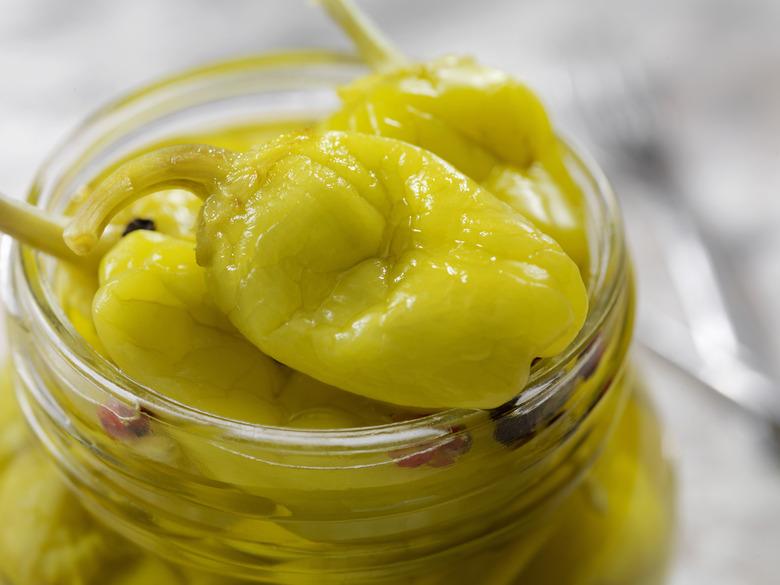How To Grow Pepperoncini
Learning how to grow pepperoncini (Capsicum annuum) expands your vegetable garden options with a different pepper. The pepperoncini is a type of pepper that is also known as Tuscan pepper, sweet Italian pepper and golden Greek pepper. These mild peppers are frequently served with pizza and offer a tangy flavor. They are grown in much the same way that other peppers are grown. After growth, these peppers are usually pickled and placed into jars for sale.
Things Needed
-
Container
-
Mulch
-
String
How to Grow Pepperoncini
1. Start Pepperoncini Plants Indoors
Start your pepperoncini plants as seeds inside in the early spring or late winter. Press the seeds approximately a quarter-inch into a good, all-purpose potting soil. Water them daily to keep them moist and place the containers in a sunny window. Typically, you'll begin to see seedlings in one to two weeks.
2. Transplant Pepperoncini Seedlings
Transplant your pepperoncini seedlings outside when the night temperatures are consistently above 55 degrees Fahrenheit and there's no longer a threat of frost. Soak the pots before you transplant your peppers. Make sure the root ball is completely soaked. You don't want the soil to dry out.
3. Choose a Sunny Planting Spot
Choose a sunny location with full sunlight for your seedlings. Amend the soil with compost before planting to provide rich, organic soil for your seedlings. Avoid areas where you grew tomatoes, eggplants, peppers or potatoes the year before as this can cause disease issues.
4. Plant Pepperoncini Seedlings
Dig a hole that's the same size as the pot that you're transplanting the peppers from. Separate the roots a little to loosen them so they'll spread out after they're planted. Set the seedling into the ground and cover it back with the original soil that came from the hole. Place your plants 10 to 15 inches apart in rows with 2 to 3 feet between the rows. This will give you enough room between plants to harvest and will provide your plants with enough room to grow.
5. Apply Mulch to Seedlings
Apply a 2- to 4-inch layer of mulch around your plants so that they'll maintain their water balance and not dry out. This will also keep the moisture evenly distributed and help to cut down on weeds in your garden.
6. Water Pepperoncini Plants
Water your pepperoncini plants once or twice per week as needed while they're growing with at least 1 to 2 inches of water weekly. If the plants don't get enough water from rain, supplement with irrigation. For a hotter pepper, you can water the plants once a week, but don't wait longer than that or the pods will dry out.
7. Stake Pepperoncini Plants
Stake your pepper plants once they begin to grow and develop heavy pods. This will prevent the plants from breaking. Drive a stake into the ground and use string to tie the plant up.
8. Harvest Your Pepperoncini
Harvest your pepper plants when they are 2 to 3 inches long and are a bright greenish-yellow in color. A ripe pepperoncini is firm. They will store in the refrigerator for several weeks, or you can freeze them for up to a year. Pickling preserves them for several years.
